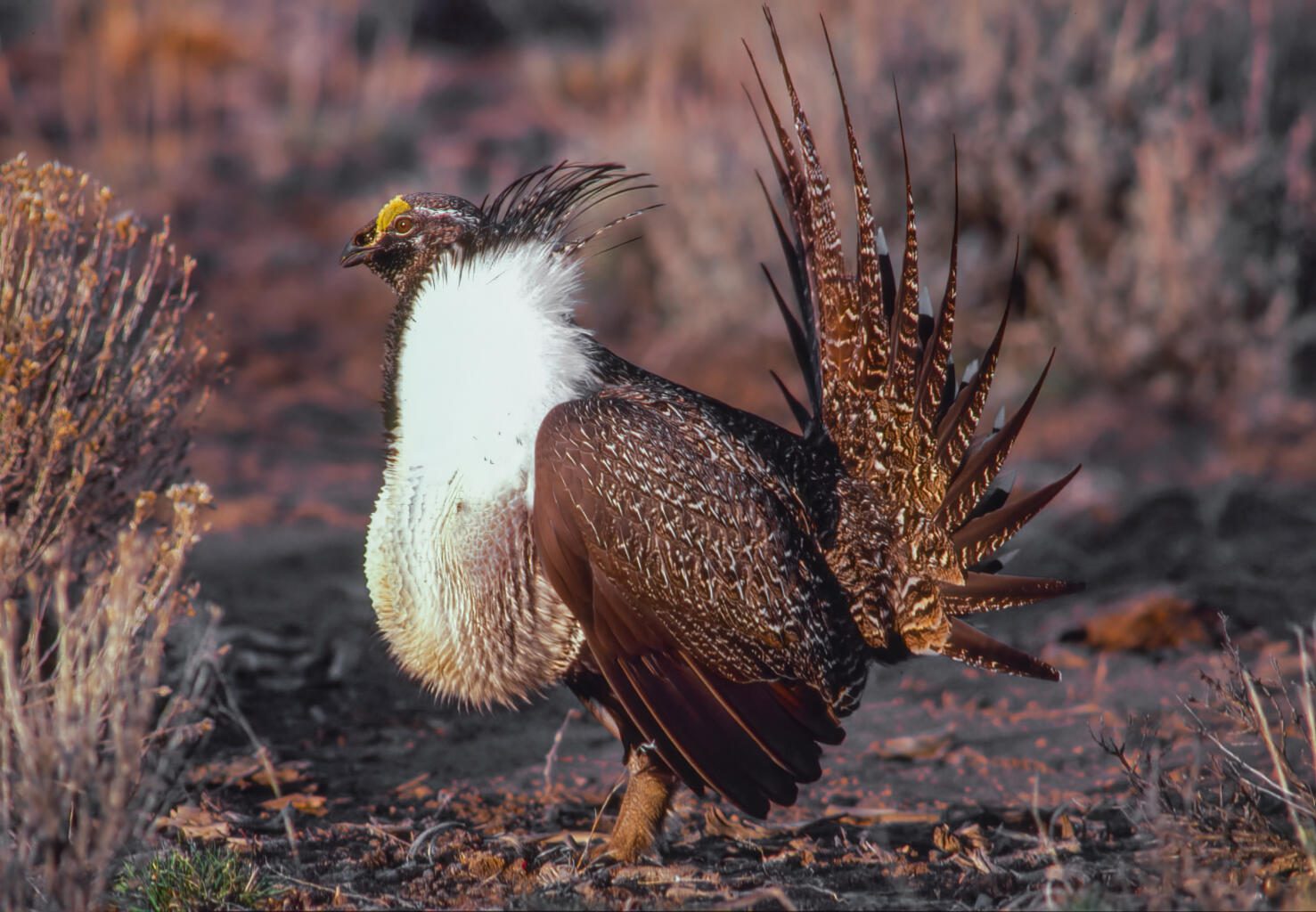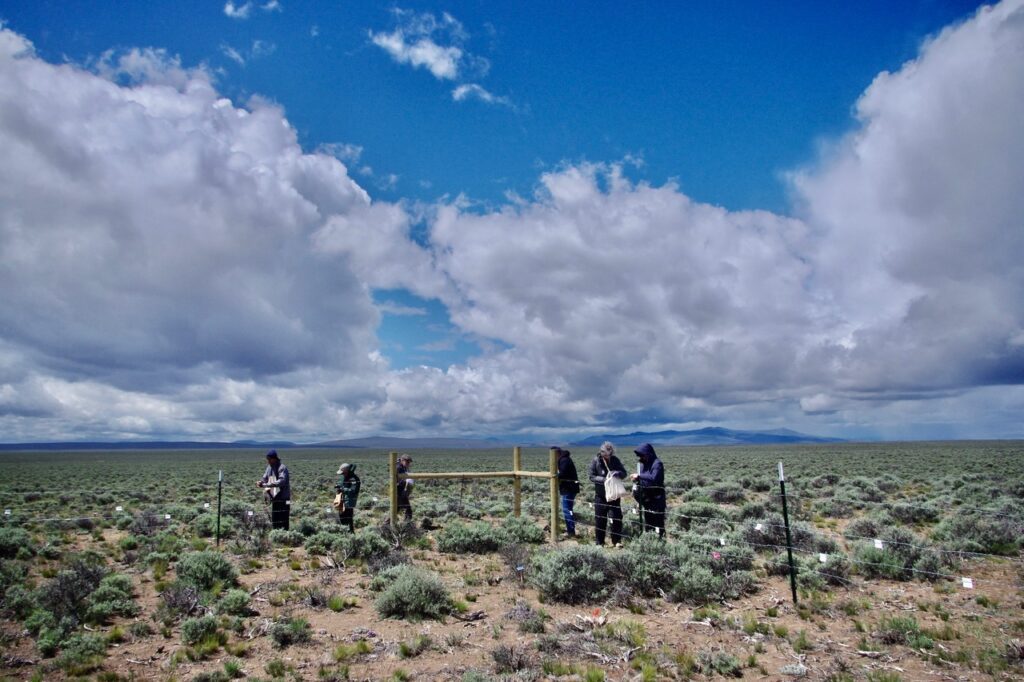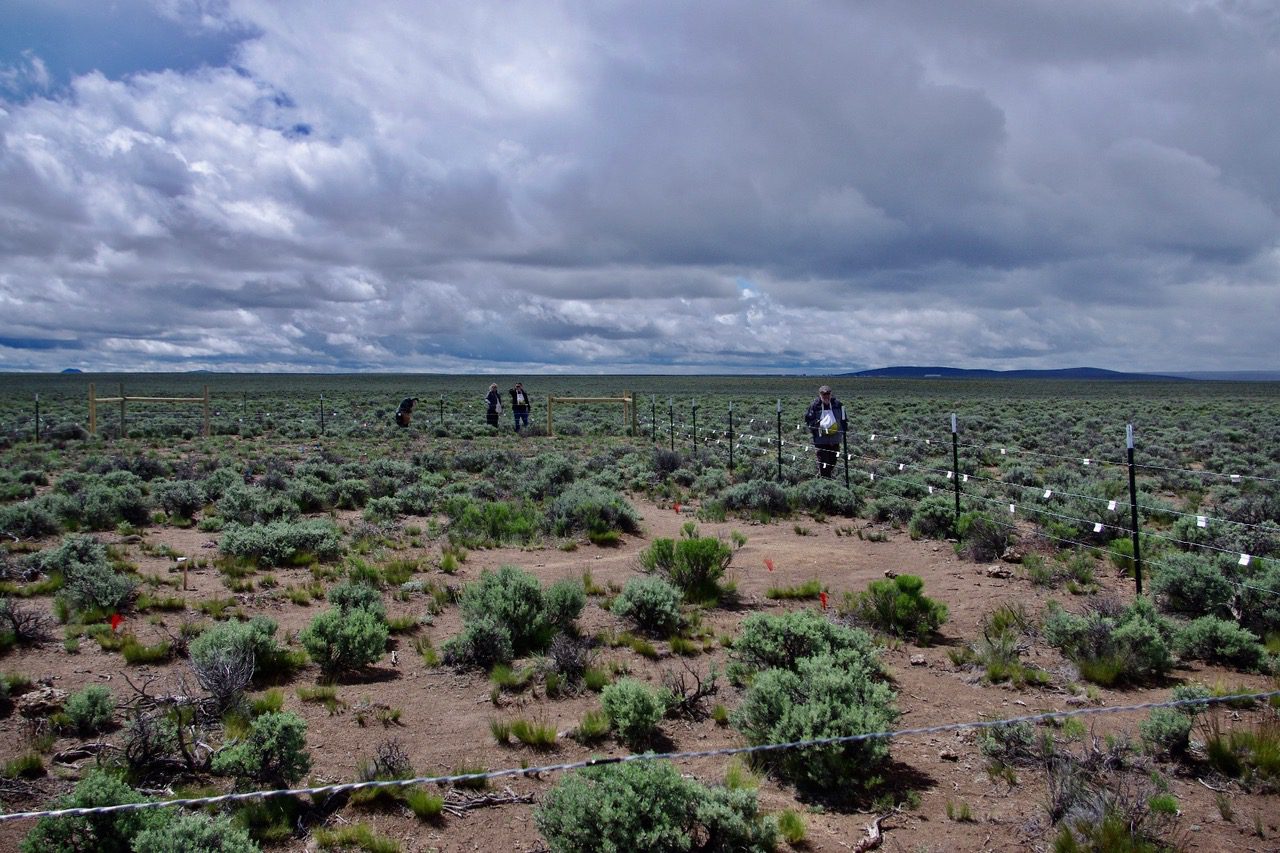Project Description
Since 2014, this project has focused on the health and survival of the Greater Sage-Grouse (Centrocercus urophasianus) in Central and Southeast Oregon. In spring and summer more than 100 volunteers work with Stu Garrett, program leader, to monitor Sage-Grouse and their habitat. Volunteers also assist in the recovery of degraded grouse habitat after fire or other incursions. Fall and winter are used to coordinate with the U.S. Forest Service, Bureau of Land Management, Deschutes National Forest, Oregon Natural Desert Association, Natural Resources Conservation Service, U.S. Fish and Wildlife Service, ranchers, and other partners to plan for the following breeding season.
The project is funded by ECAS, grants, and private donations..
Why We Do This and What We Have Learned
We do this to reverse the decline of the Greater Sage-Grouse.
We have learned that the biggest threat to grouse in Southeast Oregon is depletion of the sagebrush understory of native wildflowers and grasses that are necessary for the grouse.
We know that after a fire, sage habitat takes from 25-75 years to recover. However, by replanting sage and forbs we can speed up that process dramatically.
We have also learned that the state of environmental protection for Sage-Grouse waxes and wanes with changing governmental administrations.
What Volunteers Do
Volunteers help to monitor and restore habitat, search for leks, count pellets, and otherwise assist the project leader in restoration efforts.
Project Focus Areas
- Activism/Advocacy
- Habitat Restoration/Improvement
- Community Engagement
- Bird Conservation
- Endangered/Threatened Species
- Ecological Study
Would You Like to Volunteer?
To volunteer, email your contact information to ECAS at ecaudubon@gmail.com. Please put “Greater Sage-Grouse Project” in the subject line.
Updates:
Other Projects
- Bluebird Nest Box Project
- Cabin Lake Bird Blind
- Deschutes Land Trust / ECAS Bird Surveys
- Don and Lowell Franks Nest Box Project
- Geographic Information Systems (GIS) Project Support
- Golden Eagle Nest Camera on Whychus Creek
- Green Ridge Raptor Survey
- Highway Osprey Nest Monitoring
- Kestrel Nest Box Project
- Lake Abert Coalition Bird Survey
- Pinyon Jay Study
- Summer Lake Shorebird Survey
- Vaux’s Swift Migration Survey
- Whiskey Springs Restoration
- Winter Raptor Surveys



